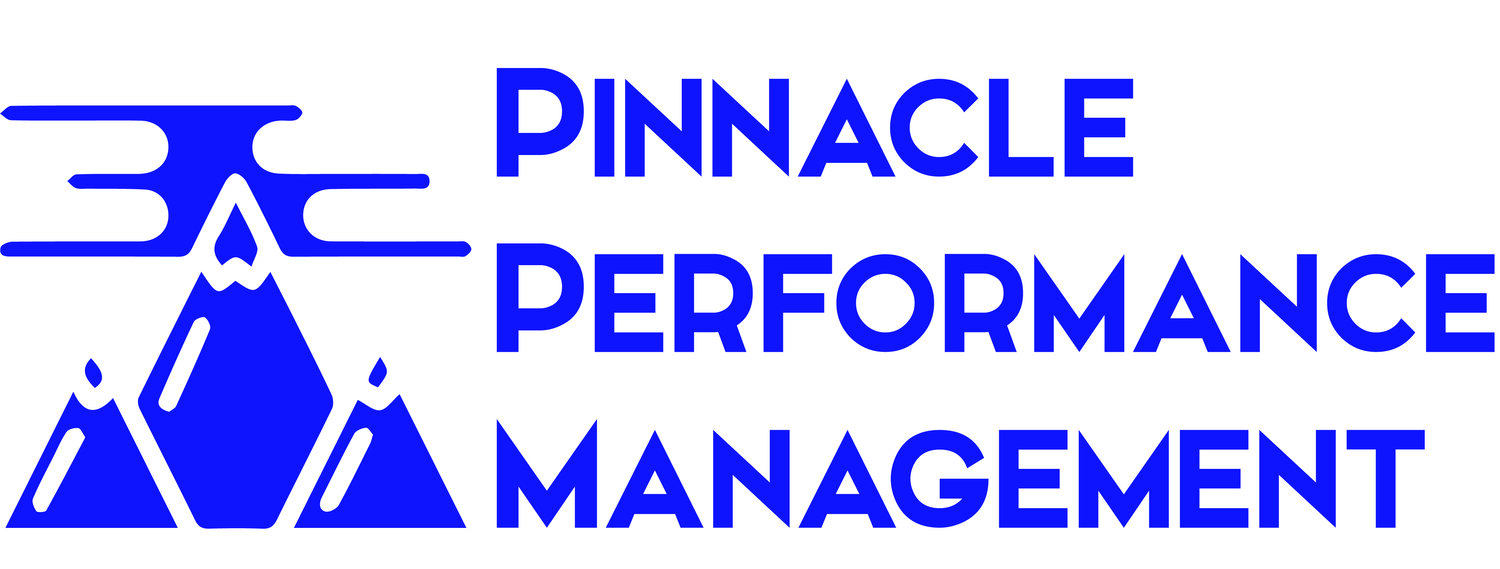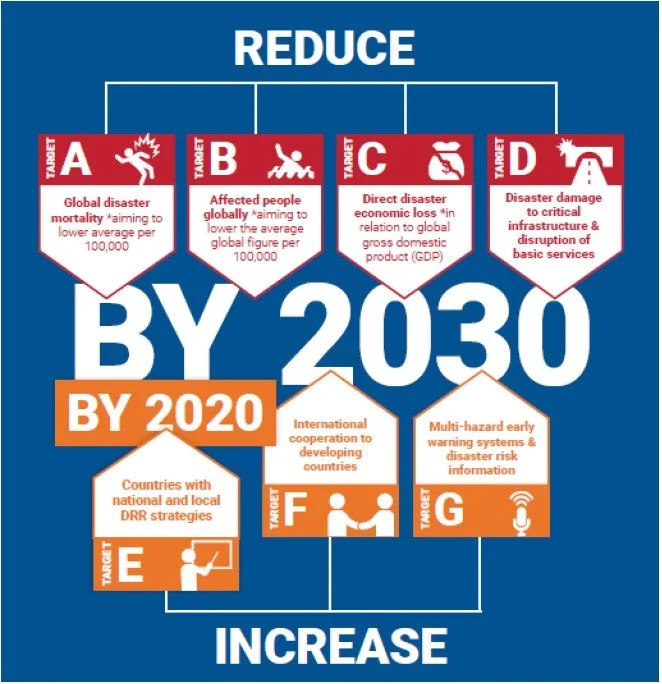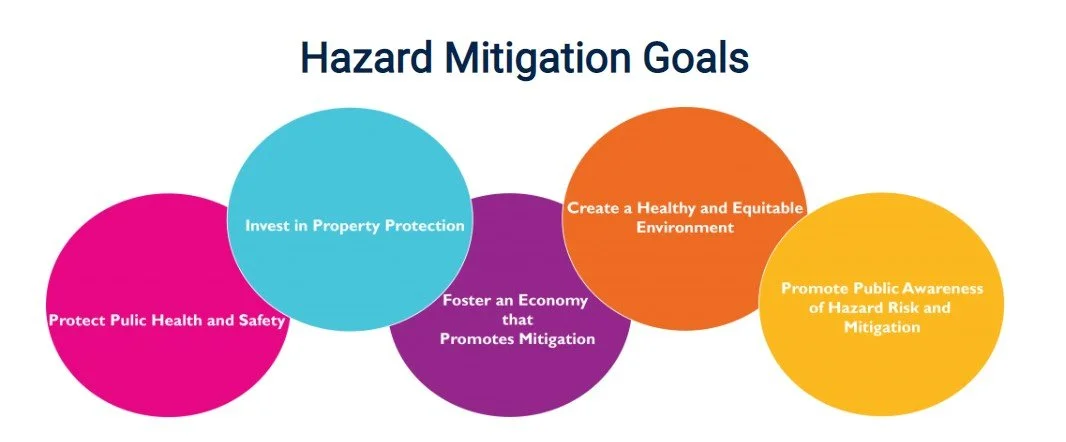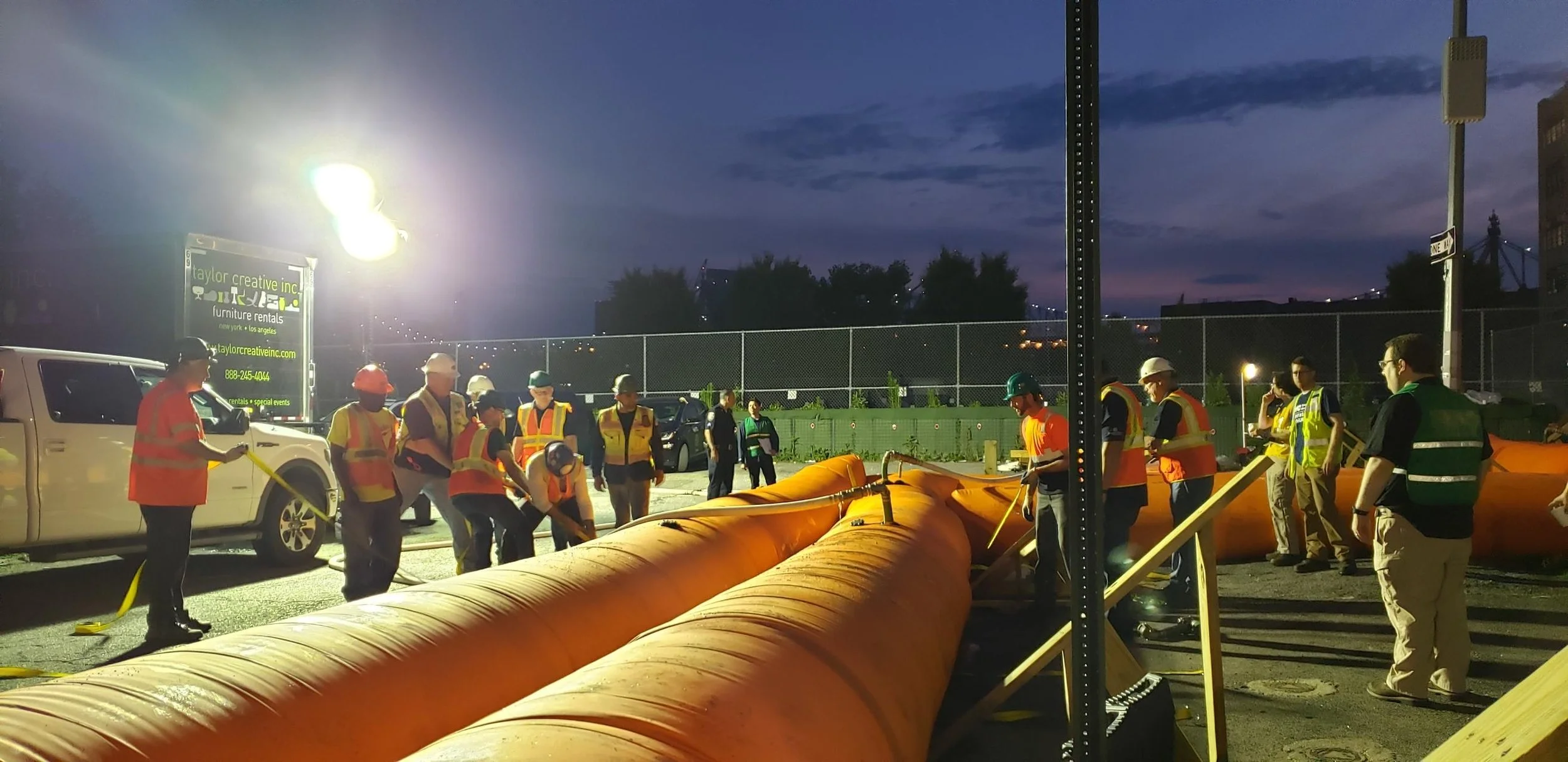Building Resilience through Disaster Risk Reduction
DRR Targets by 2030
The Sendai Framework for Disaster Risk Reduction, established by the UN General Assembly at the 2015 World Conference in Japan, seeks to significantly mitigate disaster risk and losses in various societal sectors. It emerged following the catastrophic 2004 Indian Ocean Earthquake and Tsunami, and the 2011 Sendai Earthquake and subsequent Fukushima Disaster. It aligns with the Paris Agreement on Climate Change and the Sustainable Development Goals.
The framework outlines seven targets to be achieved by 2030, including significant reductions in disaster mortality and affected population, direct economic loss, and disaster damage to infrastructure. It also calls for an increase in countries with local and national disaster risk reduction strategies, enhanced international cooperation with developing nations, and improved access to multi-hazard early warning systems. The short video below discusses the root factors from global warming and some of the major impacts.
The methodology defined in the Sendai Framework argues that disasters result from the interplay of hazard, exposure, and vulnerability, rather than being purely natural events. It emphasizes that human settlements and the risks they face contribute to the severity of disasters. The Disaster Risk Reduction (DRR) approach promotes proactive risk management, particularly in developing countries that have historically struggled to respond to and recover from disasters. However, developed nations have also taken up the charge of DRR targets.
Flooding at West Street in NYC. Photo by NYC MTA.
The rising impacts of climate change have driven emergency managers and public safety professionals to focus greater attention on DRR. Rather than merely responding post-disaster, resources should be directed towards preventative and mitigation efforts. In the United States, large jurisdictions like New York City and California are already investing in risk reduction projects. For instance, the New York City Emergency Management Department collaborates with various agencies on hazard mitigation, while the California Office of Emergency Services leads state and local mitigation planning.
2019 Hazard Mitigation Plan; NYC Hazard Mitigation Goals
The New York City Emergency Management Department (NYCEM) has implemented a systematic approach to reducing disaster risks through its Hazard Mitigation Plan, in line with the principles of the Sendai Framework. They have established a dedicated unit focusing on hazard mitigation, working closely with the Department of City Planning (DCP) and the NYC Mayor’s Office of Resiliency.
Flood Protection Measures Program exercise in Long Island City, NY
These collaborations have led to the development of various risk reduction projects and strategies, ranging from improved flood defenses through strategically placed berms and heatwave response plans to extensive public education campaigns about emergency preparedness. The collaboration between these different departments ensures a comprehensive, city-wide approach to DRR, integrating it into all facets of city planning, construction, and response strategies.
Wildfire in the California Mountains
The California Office of Emergency Services (CalOES) is actively leading DRR efforts through the State Hazard Mitigation Plan (SHMP), which details strategies for reducing the impact of hazards on the state's communities and environment. A part of this, CalOES maintains two units specifically devoted to mitigation planning at both state and local levels. These units work on identifying potential hazards, assessing vulnerabilities, and formulating strategies for risk reduction. They cooperate with local governments, private sector organizations, and communities to develop effective and practical solutions. This includes improving infrastructure resilience, promoting land-use policies that consider hazard zones, and conducting extensive public education campaigns on disaster preparedness.
An example of these DRR efforts is the Earthquake Brace + Bolt (EBB) program which assists California homeowners in mitigating earthquake damage through grants of up to $3,000 for residential seismic retrofits. These funds support measures like bracing crawl spaces and bolting the foundation to the house frame, reducing structural vulnerabilities.
California Residential Mitigation Program (CRMP), Earthquake Brace + Bolt (EBB) Program
These efforts represent a shift from a reactive approach to disaster response to a more proactive, preventive methodology. In essence, all jurisdictions and organizations should integrate risk understanding into their emergency management and public safety planning. They should assess and prioritize risks arising from threat and hazard events and develop strategies to mitigate, prevent, and prepare for such incidents. By adopting a growth mindset, valuable insights can be gleaned from global examples of disaster risk reduction and applied locally. As we proceed down the road of an uncertain climate future, the importance of understanding and managing disaster risks has become increasingly apparent.






